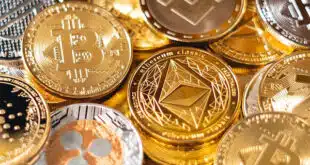For years merchants have sought ways to market to customers on a personal level and drive in-store sales in real time. Is beacon technology the answer?
There’s been a lot buzz lately around the use of mobile beacons in merchant locations to drive sales, and with good reason.
With smart phones becoming commonplace—68% of American adults owned one in 2015, up from 35% in 2011, according to the Washington, D.C.-based Pew Research Center—merchants see a golden opportunity to leverage the technology’s geolocation capabilities.
Using devices called beacons deployed strategically in a store, marketers can push promotional text messages to a nearby consumer that entice her to stop in and buy a specific product or brand, or just spend more once she enters a store.
So far, merchants that have rolled out beacon programs are seeing a substantial lift in sales. Chinese jewelry retailer CTF saw an uplift of $16 million in sales year-over-year from a beacon-based campaign in early 2015, says Windsor Holden, head of forecasting and consultancy for Juniper Research, a United Kingdom-based digital-marketing research firm, by email.
In 2014, 26 McDonald’s restaurants in Columbus, Ohio, saw sales of McChicken sandwiches increase 8% thanks to a similar campaign based on geolocation.
Overall, beacons were predicted to directly influence more than $4 billion of retail sales in the United States in 2015 and 10 times that amount in 2016, according to Business Insider, a New York-based business-news Web site.
And beacon-enabled offers deliver high redemption rates. The average redemption for mobile coupons delivered in-store via a beacon is about 25%, says Holden. “Between May and August 2015, Niemann Foods, a Quincy, Ill.-based grocer, saw redemption rates as high as 50% from in-store coupons delivered to shoppers’ smart phones via beacons,” Holden says.
Turning Heads
Results like that are turning heads in the merchant community, where beacons were considered experimental only a couple of years ago. Now, such major retailers as Macy’s, Target, Lord & Taylor, Hudson’s Bay Co., American Eagle Outfitters, and Walgreens have either rolled out beacons in their stores or are testing them. Macy’s, for instance, has deployed 4,000 beacons across its more than 850 stores.
Target is testing the technology at 50 stores in Chicago, Denver, Minneapolis, New York City, Pittsburgh, Portland, San Francisco, and Seattle. The retailer is also developing additional features. In one case, its mobile app communicates with beacons to dynamically re-sort a customer’s shopping list to show the product closest to her as she moves through the store. This concept is similar to how a smart-phone map re-routes a user when he veers off course.
Plans are also in the works to enable app users to request help from a sales representative while in-store.
Simon Property Group, which operates malls and outlet centers in the United States and abroad, has reportedly launched beacon programs in several of its properties. Simon Property did not respond to inquiries from Digital Transactions.
What makes beacon-based marketing so effective is the large and growing population of smart-phone users. Together with beacons, these devices give merchants the ability to identify a customer as he enters a store, track his movements, and use information on file about his past purchases and other behavioral data to serve up relevant, personalized offers that coax him to make a purchase.
Besides merchants, other prominent companies such as Facebook and Instagram are raising consumer awareness of beacons through their own use of the technology. Facebook is testing beacons to deliver information about merchants and landmarks to nearby mobile users.
Filtering Down
As more consumers become exposed to beacons, geolocation-technology experts predict beacons will filter down to more small and mid-size retailers.
Boston-based LevelUp, a provider of mobile-payment and loyalty solutions that primarily serves small and mid-size merchants, is among the first to target this merchant segment.
LevelUp has installed beacons in almost all of the 14,000 merchant locations it works with. Consumers who have downloaded the LevelUp app and enabled their phone’s Bluetooth or Wi-Fi setting can receive incentives to purchase as they walk by or enter a LevelUp merchant. Merchants can also send exiting customers a coupon good for their next visit.
Through the LevelUp portal, merchants can customize message content and review customer analytics, such as the volume of store traffic a promotional offer generated and how many first-time customers the offer attracted.
“We are giving merchants the tools to develop personalized marketing campaigns for consumers that use our payment network,” says Alex Shuck, LevelUp’s director of marketing and analytics.
Others focusing on small and mid-size merchants include Kansas City, Mo.-based FINDitKC, a digital-media company, and Moblico, a mobile-marketing company.
In 2014, the two companies rolled out beacons to 350 local merchants. The program helped participating merchants locate customers using the FINDitKC app on their phone so they could be sent promotional messages.
“Consumers are relying on their mobile devices more and any technology that allows merchants to interact with consumers on a personal level through the mobile device is going to get broad adoption,” says Manish Patel, chief executive of Brandify, an Anaheim, Calif.-based provider of location-based digital-marketing solutions. “How the app experience compares to a live, personal interaction is important to consumers.”
Gateway Apps
As merchant adoption of beacon technology grows, so will the number of marketing messages sent to consumers who are carrying phones enabled to receive offers transmitted by beacons. Juniper Research predicts that the number of messages sent via beacons will reach 1.6 billion in 2020, up dramatically from 11 million in 2015.
But messaging from beacon to mobile device is far from automatic. Consumers must download apps onto their smart phones and enable them to communicate with beacons.
“There are several steps consumers have to go through,” says Bill McCracken, chief executive at Norcross, Ga.-based Synergistics Research Corp. “First, they must load a merchant’s app, then enable Bluetooth, then opt in to receive push messages through the app. Receiving messages doesn’t start with downloading the app.”
Then there’s the question of how many merchant apps consumers are willing to load onto their phones. Marketing experts say most consumers download apps only from merchants to which they have a strong affinity.
One alternative is to offer merchants so-called gateway apps that appeal to a broad segment of consumers. Multiple merchants can piggyback on these gateways.
Allrecipes, a food-focused social-networking app that serves foodies and cooks original content and personalized tools to guide them when planning, shopping for, and preparing meals, is one such app.
Allrecipes is piloting beacon technology from VeriFone Systems Inc. that will reside within the next generation of the company’s payment terminals. As a consumer with the Allrecipes app enters any grocery store using a VeriFone beacon-enabled terminal, she is immediately shown several recipes likely to appeal to her based on her profile. Consumers can then select a recipe and instruct the app to sort the ingredients into a shopping list.
Because the app is programmed to gather weekly online fliers for grocers within VeriFone’s beacon network, it learns what items in the selected recipe are on sale and highlights them. The app can also suggest a wine or dessert to accompany the meal.
“We are focusing on working with apps that are widely distributed and all our merchant customers can leverage,” says Richard Char, senior vice president for business development at San Jose, Calif.-based VeriFone.
Verifone, which is using beacons from Seattle-based Footmarks Inc., has installed terminals in nine of the Top 10 grocery stores in the United States, Char says. Two of its supermarket clients are testing its beacon technology with the Allrecipes app.
While the company plans to make beacons a standard feature in its next generation of terminals, some older terminals can be retrofitted with beacons, Char adds.
Avoiding Annoyance
One potential stumbling block with gateway apps is message frequency. Consumers have a limit as to how many messages they will tolerate before they start to ignore them, or worse, opt-out from receiving them, says Synergistics’ McCracken.
To prevent message fatigue, some merchants are imposing limits on the number of messages sent. Target, for example, sends no more than two messages per shopping trip. Merchants can also require consumers to take a specific action to receive a message, such as tapping a message icon that appears on their phone while shopping.
“It would be suicide to annoy a mobile consumer with too many messages,” says Tim Sloane vice president for payments innovation at Maynard, Mass.-based Mercator Advisory Group, by email. “I don’t think anyone today knows what is the right frequency of messages, and figuring it out will require a lot of work.”
Clearly, beacon technology is still in its infancy. The key to mainstream adoption, geolocation experts say, lies with gateway apps that consumers can use at multiple merchants.
Once that’s sorted out, the potential is huge. “Consumers today, especially mobile users, expect marketing messages to be more targeted,” says Level-Up’s Shuck. “Beacons give merchants a unique way to interact with consumers on a more personal level to drive sales and store traffic.”
An Alternative to Beacons
Beacons are not effective once the consumer is out of range. One alternative is so-called card linking, which leverages the global positioning system in a mobile phone to track the consumer’s location and deliver a message via an app.
To make this work, the consumer must register a loyalty, credit, or debit card with an app provider, such as a merchant or card issuer, download the app onto his phone, and instruct the app when he wants to receive messages.
Earlier this year, Redmond, Wash.-based Microsoft Corp. launched Microsoft Earn, a rewards program in which registered users receive points redeemable toward future purchases at the Microsoft store each time they make a purchase at a participating merchant. The program is being piloted in Washington, Arizona, and Massachusetts, and is expected to roll out later this year. Each time the consumer users his registered card, he receives a push message on his phone informing him of points earned and his point total.
The program drives sales to participating merchants, brings an issuer’s card to the top of the consumer’s wallet, and engenders loyalty to Microsoft products, says Neal Bernstein, senior director and general manager for Microsoft Earn.
Merchants can also send messages to consumers informing them they can earn bonus points if they buy during a specific time or purchase a certain product.
“What makes this program attractive is that there is no friction for the consumer, and merchants don’t need to do any POS integration,” says Bernstein.
Card issuers American Express Co. and Bank of America Corp. have already developed programs around card-linking technology.
“While beacons can precisely locate a customer in a store, they are just one part of a geolocation-based marketing strategy,” says Silvio Tavaras, chief executive of CardLinx, a San Bruno, Calif.-based association that develops technical standards and provides platforms and databases to support card-linking programs. “Card linking enables companies to push messages to a consumer’s phone any time, anywhere using the phone’s GPS.”





